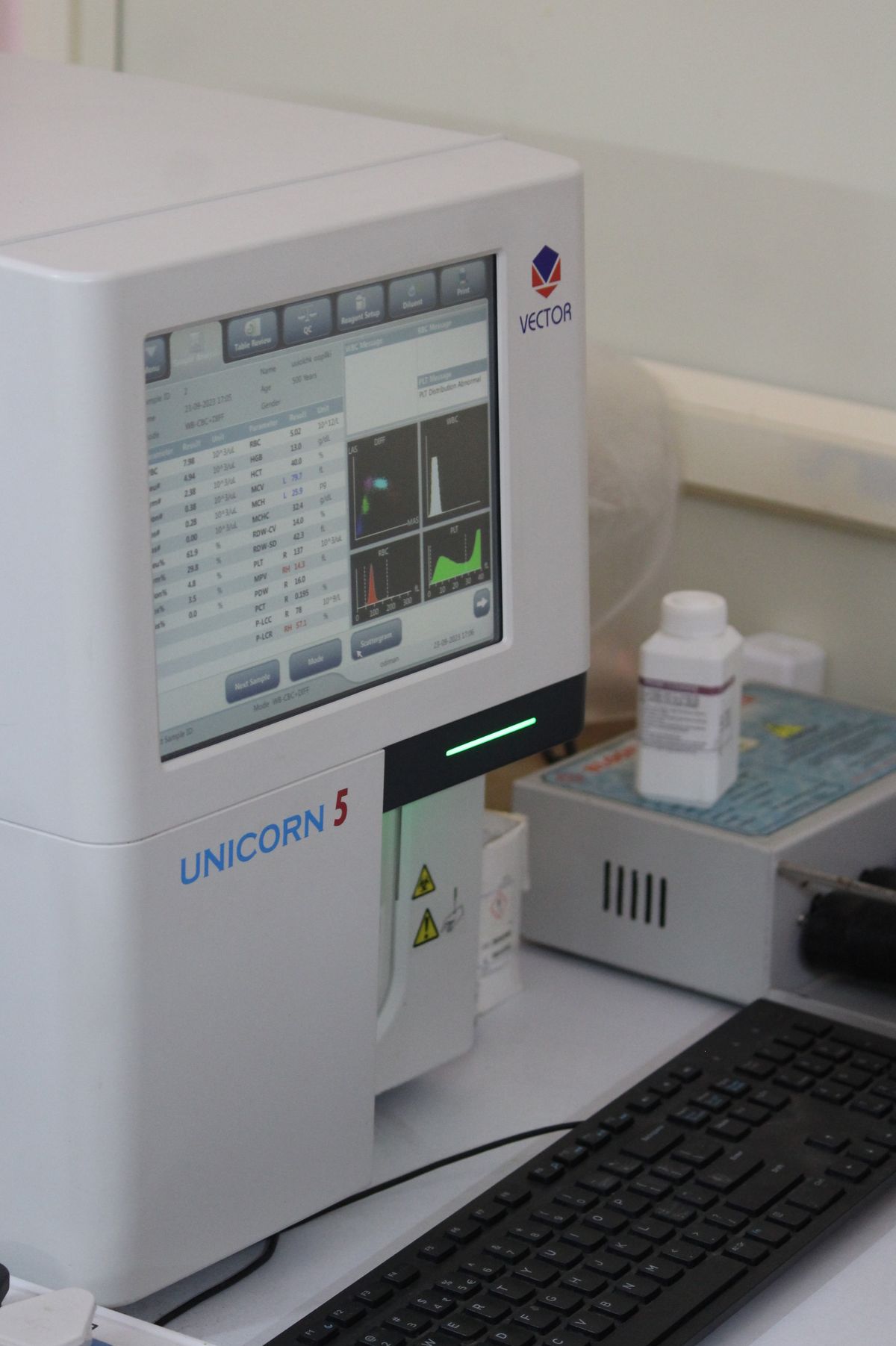3 Part Vs. 5 Part CBC Machine

In this post we will be talking about major difference between a 3 Part Vs. 5 Part CBC Machine and how the type of machine affects the accuracy of your report.
TL;DR - A 5 part machine is more accurate as it uses Dynamic Gating Technology to produce more accurate information on the WBC subpopulation. It can also major additional parameters such as Hemoglobin Concentration, Red Cell distribution width and mean platelet volume.
What exactly are CBC machines?
- The machines used in the Hematology department of every laboratory to perform a complete blood count test.
- An usual report of CBC test consists of parameters like - RBC count, WBC count, Platelet count, MCH, MCV. To not make this post exhaustive, we will talk more about CBC reports and parameters in another post.
What is a 3 part CBC machine?
A 3-part hematology analyzer is a device that measures the levels of three types of white blood cells (WBCs) in a blood sample:
- Lymphocytes (LYM);
- Mid-sized cells (MID);
- Granulocytes (GRAN).
What is a 3 part CBC machine?
A 5-part hematology analyzer is a device that measures the levels of five types of WBCs in a blood sample:
- Lymphocytes (LYM);
- Monocytes (MONO);
- Neutrophils (NEU);
- Eosinophils (EOS);
- Basophils (BASO).
How is 5 part any different than 3 part?
A 3-part analyzer uses electrical impedance to count and size the platelets, while a 5-part analyzer uses optical or fluorescence methods to identify and classify the platelets.
Electrical impedance is based on the principle that a cell passing through an aperture will cause a change in the electrical resistance, which is proportional to the cell volume.
Optical or fluorescence methods are based on the principle that a cell passing through a light beam will scatter or emit light in different directions and intensities, which are related to the cell shape and structure.
The exact problem with 3 part machines -
Electrical impedance can be affected by various factors, such as high or low hematocrit, microcytic or macrocytic red blood cells, nucleated red blood cells, red blood cell fragments, or platelet clumps. These factors can cause false high or low platelet counts, depending on whether they are counted as platelets or not. Optical or fluorescence methods can overcome some of these limitations by using different wavelengths of light to distinguish between platelets and other cells.
Electrical impedance can be affected by various factors, such as high or low hematocrit, microcytic or macrocytic red blood cells, nucleated red blood cells, red blood cell fragments, or platelet clumps. These factors can cause false high or low platelet counts, depending on whether they are counted as platelets or not. Optical or fluorescence methods can overcome some of these limitations by using different wavelengths of light to distinguish between platelets and other cells.
In simpler terms - A 3-part analyzer can only distinguish between large and small cells, while a 5-part analyzer can recognize the specific characteristics of each cell type. Making it more effective at providing more accurate results.

